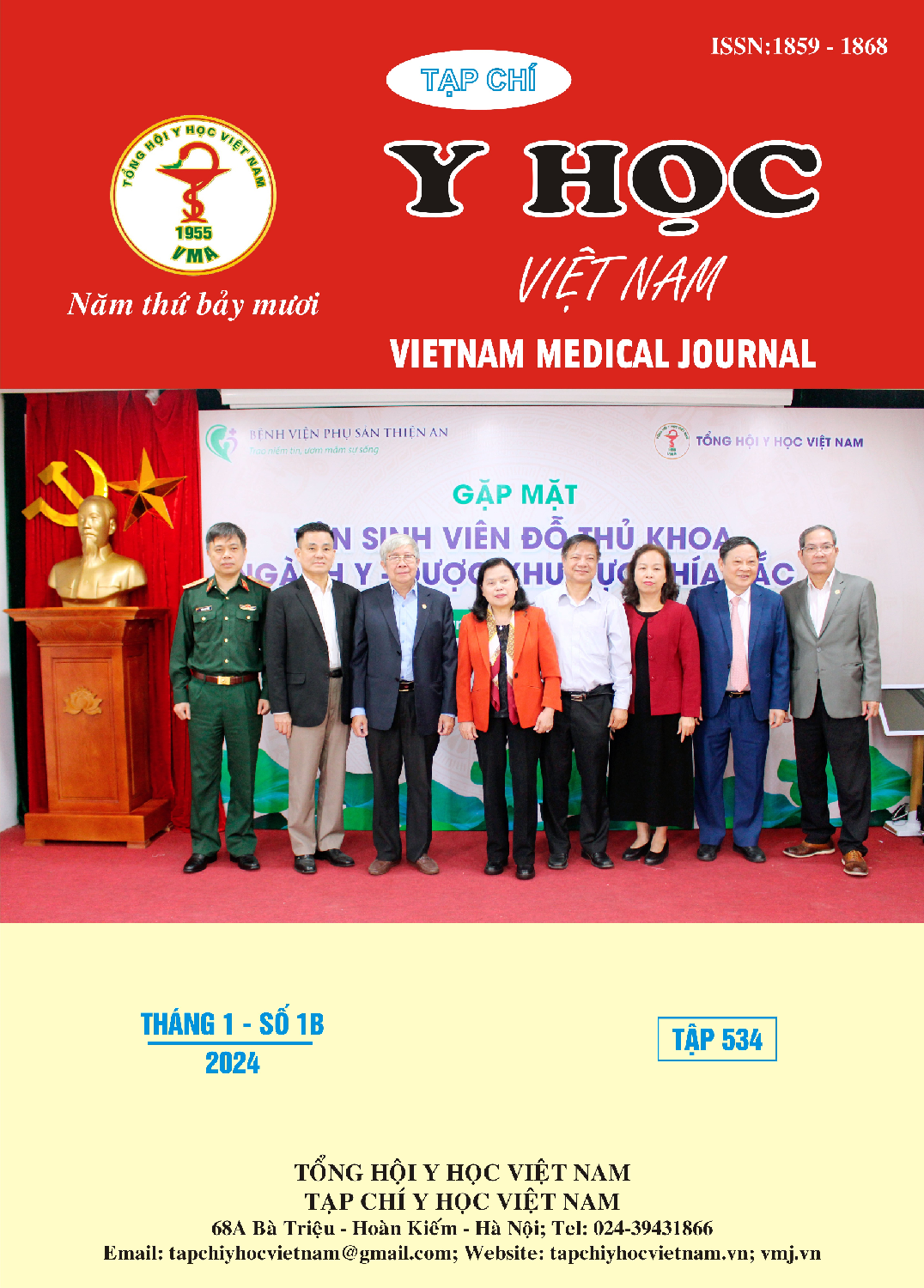SHORT-TERM OUTCOMES OF CARDIAC RESYNCHRONIZATION THERAPY IN GERIATRIC PATIENTS WITH HEART FAILURE REDUCED EJECTION FRACTION
Main Article Content
Abstract
Background: Heart failure is a clinical syndrome presenting with specific symptoms and signs, as a result of various structural and functional abnormalities. In this group of patients with heart failure, cardiac dyssynchrony was an independent predictor of overall death. The resynchronization treatment helps to reduced the mortality rate; However, the effectiveness of this method was mainly investigated in the general heart failure population in Vietnam. Evidence on efficacy and safety in elderly patients is still limited, with the proportion of elderly in cardiac resynchronization studies being only 15-37.5%. Cardiac resynchronization therapy has been carried out since 2008 at Cho Ray hospital, with a large numbert of patients and most of which are elderly. For the above reasons, we conducted a this study in order to access the efficacy and the safety of this treatment in such fagile group of patients, the elderly. Objective: To evaluate the effectiveness and determine the complication rate during 1 month after treatment with cardiac resynchronization therapy in elderly patients with heart failure and reduced ejection fraction at Cho Ray Hospital. Subjects and methods: The study included patients over 60 years old who had been diagnosed with heart failure with reduced ejection fraction according to diagnostic criteria of ESC 2016, with EF≤ 35% and had been receving optimal medical therapy for at least three months. These patients had indication for resynchronization therapy and were implanted with CRT devices at Cho Ray hospital from March 2017 to June 2022. We conducted a cross-sectional study with longitudinal follow-up up to 1 month after cardiac resynchronization therapy and documeted complications as well as response rates based on the patient's clinical and echocardiographic improvement. Results: This study enrolled 100 elderly patients with heart failure with reduced ejection fraction with an average age of 70.3 ± 7.6 and 45% of them are male. Evaluation was based on composite criteria of both clinical symptom response (NYHA class of heart failure, 6-minute walk test) and echocardiographic parameter response (left ventricular ejection fraction, chamber sizes), the response rate to cardiac resynchronization therapy in the elderly with heart failure with reduced ejection fraction at 1 month was 49%. The complication rate for 1 month after cardiac resynchronization was 10% with the most common complications including hematoma (4%), disloedgement of the left ventricular pacing lead (3%), increased pacing threshold (2%), and mistaken shock (1%). However, the complications were all successfully managed conservatively. Conclusion: Cardiac resynchronization therapy can be used in the treatment of elderly patients with heart failure with reduced ejection fraction when the patients are correctly indicated. This treatment could benifit in obtaining early response to improve symptoms of heart failure with a 1-month complication rate of 10%.
Article Details
References
2. Nguyễn Tri Thức. Nghiên cứu tối ưu hóa khoảng dẫn truyền nhĩ thất bằng siêu âm doppler tim và thông tim ở bệnh nhân được đặt máy tái đồng bộ tim. Luận văn Tiến sĩ y học. 2021;.
3. Phạm Như Hùng. Điều trị bệnh nhân suy tim nặng bằng máy tạo nhịp tái đồng bộ tim. Luận văn Tiến sĩ y học. 2012.
4. Moss AJ, Brown MW, Cannom DS, et al. Multicenter automatic defibrillator implantation trial–cardiac resynchronization therapy (MADIT‐CRT): design and clinical protocol. Annals of noninvasive electrocardiology. 2005;10:34-43.
5. Salukhe T, Francis D, Sutton R. Comparison of medical therapy, pacing and defibrillation in heart failure (COMPANION) trial terminated early; combined biventricular pacemaker-defibrillators reduce all-cause mortality and hospitalization. Elsevier; 2003. p. 119-120.
6. Chung ES, Gold MR, Abraham WT, et al. The importance of early evaluation after cardiac resynchronization therapy to redefine response: pooled individual patient analysis from 5 prospective studies. Heart Rhythm. 2022;19(4): 595-603.
7. Bleeker G. Bax JJ, Fung JW, van der Wall EE, Zhang Q, Schalij MJ, Chan JY, Yu CM. Clinical versus echocardiographic parameters to assess response to cardiac resynchronization therapy Am J Cardiol. 2006;97:260-263.
8. Nakai T, Ikeya Y, Kogawa R, et al. What are the expectations for cardiac resynchronization therapy? A validation of two response definitions. Journal of Clinical Medicine. 2021;10(3):514.
9. Aktaa S, Tzeis S, Gale CP, et al. European Society of Cardiology quality indicators for the management of patients with ventricular arrhythmias and the prevention of sudden cardiac deathDeveloped in collaboration with the European Heart Rhythm Association of the European Society of Cardiology. EP Europace. 2022.
10. Höke U, Putter H, Van Der Velde ET, et al. Left ventricular reverse remodeling, device-related adverse events, and long-term outcome after cardiac resynchronization therapy in the elderly. Circulation: Cardiovascular Quality and Outcomes. 2014;7(3):437-444.


